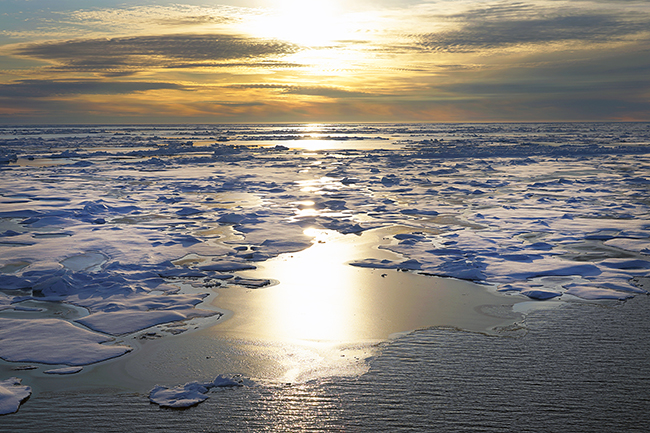As winter’s brutal grip on the Arctic has begun to loosen, the vast region’s sea ice cover likely reached its maximum extent for the year on March 14.
That maximum spread of the ice was not as paltry as it has been in some recent years. But according to the latest analysis from the National Snow and Ice Data Center, it was still 247,000 square miles below the 1981 to 2010 average.
That’s an area of ‘missing’ ice nearly as large as Texas.
For the record, NSIDC data show that the maximum extent of the ice was fourteenth lowest in the satellite record, which extends back to 1979. But that doesn’t tell the entire tale, as this animation dramatizes:
Total Arctic sea ice volume averaged the third lowest on record for the month of February. (The units are thousands of cubic kilometers. Credit: Zachary Labe using data from PIOMAS v2.1)
The animation shows a different metric: the volume of Arctic sea ice — which has declined quite dramatically. This winter, the thinner, less voluminous ice apparently was able to spread out and cover more territory than in some previous years.
Now, as spring progresses and temperatures warm, Arctic sea ice will shrivel. In September, it will reach its lowest extent of the year and begin to grow again. (Last September, it bottomed out as sixth lowest in the nearly 45-year satellite record.)
Long-Term Declines in All Months
Thanks to human-caused global heating, both the maximum and minimum extents of sea ice in the Arctic have been trending downward overall.
“The sharpest declines have occurred in the summer and fall, including the time of year when sea ice reaches its annual minimum in September,” writes NSIDC’s Michon Scott. “Although Arctic sea ice extent has not declined as much during winter months, it has still shown a steadily decreasing trend. Arctic sea ice extent now exhibits long-term declines in all months, including the coldest, darkest months of the year.”
But we humans haven’t repealed the climate system’s own natural variability. So the trend lines showing the shriveling of Arctic sea ice don’t point straight downward. They bump up and down a bit.
The extent of Arctic sea ice in the month of February has declined significantly since 1979, when satellite observations began. But due to natural variability in the climate system, the drop hasn’t occurred in a straight line. (Credit: NSIDC)
Some years have seen less-bad declines than others, as is evident in the graph above depicting the trend in Arctic sea ice extent during the month of February from 1979 through 2024.
A comparison of the extent of Arctic sea ice in March of 1979 and 2023 shows a dramatic decline. The magenta-colored line shows the long-term average extent of the ice for the month. (Credit: Images from NSIDC, animation by Tom Yulsman)
This animation comparing the extent of the ice in March of 1979 to March of 2024, cuts through the year-to-year variability and shows just how much ice has gone missing.
Yes, most of the Arctic still is covered in sea ice during the dead of winter. But an area the size of Alaska that once was frozen over is now ice free.
Source : Discovermagazine











